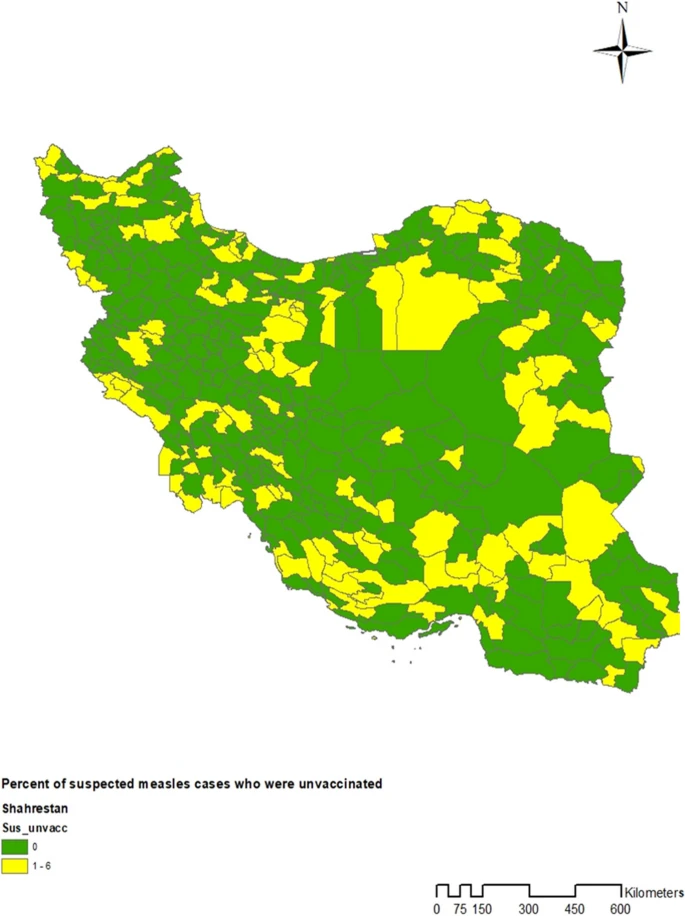
Despite successful efforts to eliminate measles in Iran, imported measles cases continue to be reported. Because measles is endemic in neighboring countries. This research aims to evaluate the risk of measles transmission in different regions of Iran.
Measles case-based surveillance data of the Expanded Program of Immunization containing 31 provinces and 463 districts from 2019 to 2021 were assessed. The WHO Measles Programmatic Risk Assessment tool was used to evaluate the risk of disease transmission in four domains: population immunity, surveillance quality, program delivery performance, and threat assessment. scores were categorized as low, medium, high, or very high risk.
During 2019–2021, the average incidence of measles was 1.9 per 1 million. Chabahar and Mashhad with 76 and ./6per million reported the highest and lowest incidence respectively. All 463 districts were categorized as low risk in risk assessment. Andimeshk, Chabahar, and Bojnurd obtained the highest risk scores with 27, 24, and 25 respectively. All districts were classified as low risk for population immunity. The average coverage of (MMR1) and (MMR2) was 95% or higher. All districts received the minimum points for surveillance quality.
All regions are placed at a low level of disease transmission risk. However, the tool is not able to assess the risk at the rural or peripheral sectors level. The indicators used in this tool are the same for all countries with different epidemiological features (elimination, endemic). Sensitivity analysis can optimize the use of this tool for countries with different disease conditions.